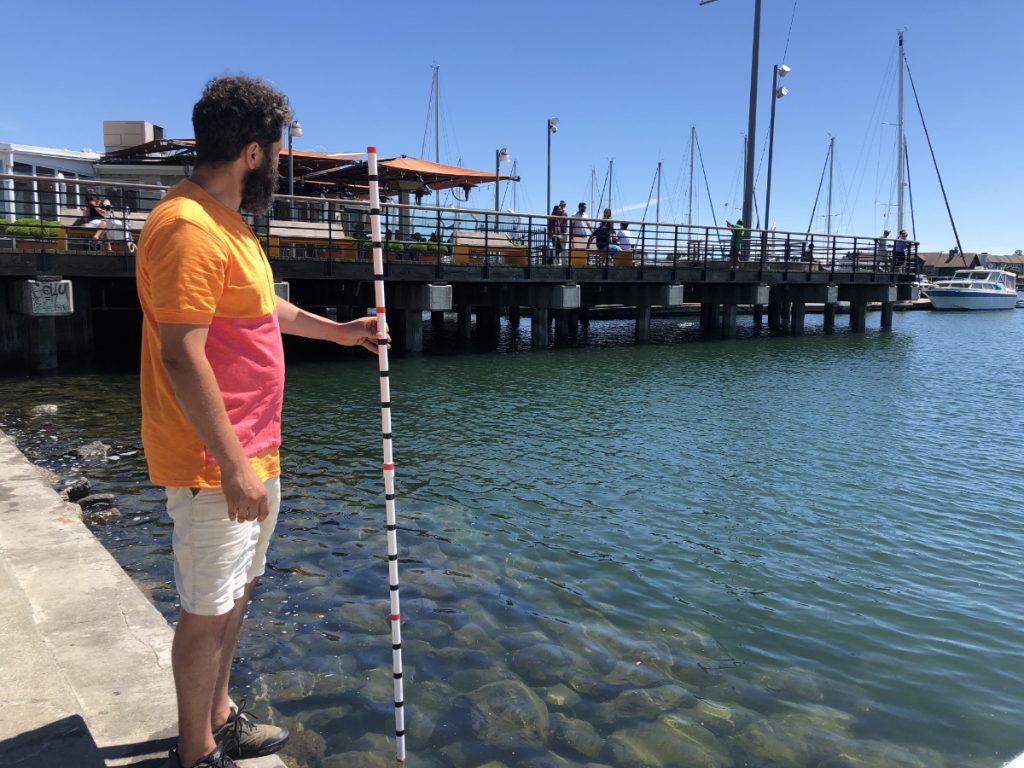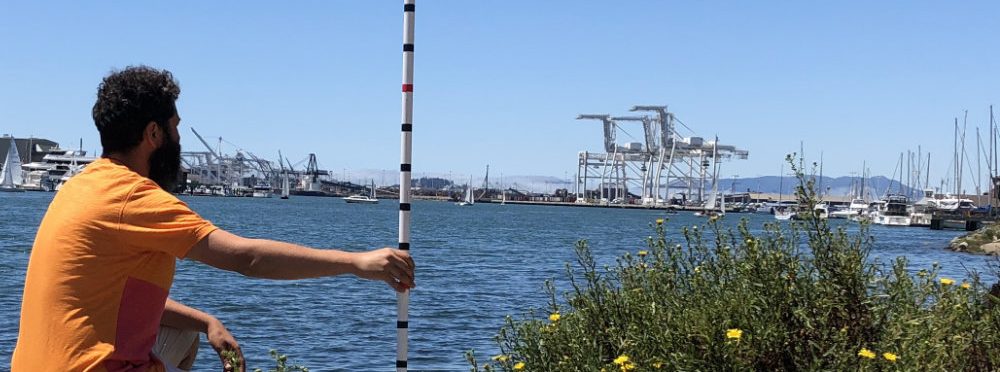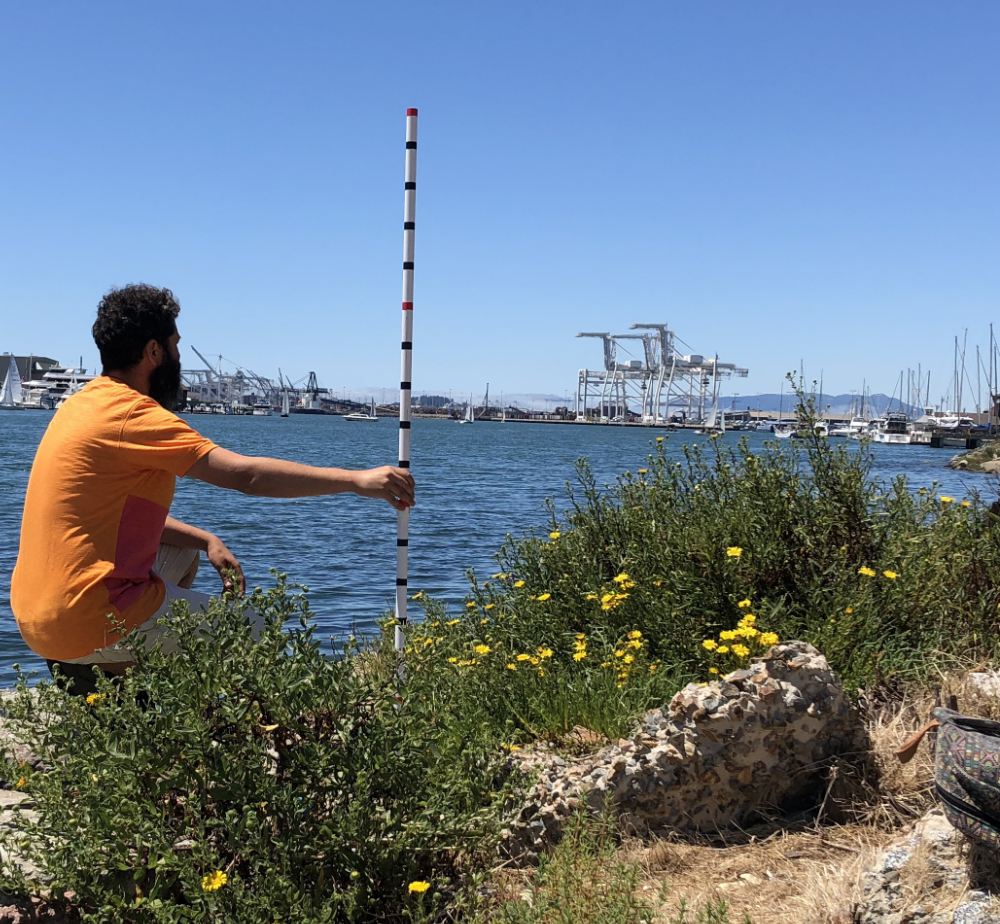Try this at home ~ 2 meters coming
- Make a two-meter measuring stick
- Go to the seaside or other tidal area (better at high tide, best at king tide)
- Position your 2 meters measuring stick on top of water or at high tide line.
- Imagine the water level half-way up the measuring stick
- Imagine the water level at the top.
- Move and repeat – exploring the coming transformation
- Start conversations with other people at the seaside
- Take pictures and post on social media #2meterscoming

The sea level is rising. Faster than most predictions. Two-meters of sea-level rise is coming. Probably within the next 80 or 100 years. A two-meter measuring stick is a simple device for imagining the coming sea-level rise. The future of most coastal cities shall be intertidal.

This ecological performance score provokes an embodied experience of coming sea-levels. The sea level is rising because of human transformation of the energy balance of the atmosphere. By adding more carbon dioxide and other greenhouse gases to the atmosphere, humans have increased the heat capacity of the atmosphere. The atmosphere transfers some of this excess energy into the oceans and the excess heat melts the ice or cryosphere on the planet. The oceans and the cryosphere are dynamical interconnected with the atmosphere. These interconnections are part of what is called the earth-system. The oceans and the cryosphere are quite large and their reactions to change in the atmosphere are quite slow. Warming the oceans and melting ice from land to sea expands the volume of the water and raises the overall water level.

Industrial humans already accidentally committed the oceans to two meters of sea level rise probably by the late nineteen-seventies. The current and soonest coming sea level rise is a latent effect of past emissions. The latent effects of atmospheric transformation last thousands of years. In the beginnings of climate science, scientists did not know very much about the dynamics of melting glaciers, ice flows and ice caps. Predictions for rising seas have consistently proven to be underestimates when compared with later observations.

Unfortunately, climate science has consistently under-estimated the effects and risks of adding energy capacity and heating to the atmosphere. The current global political unbinding joke debate is centered around keeping warming below two degrees, a target we probably blew through by 1978 when all the latent feedbacks and effects described by earth-system science are counted.

For 2meterscoming, I choose two meters because this amount is considered the limit of the current politically acceptable and best available science for sea-level rise this century. Based on previous underestimations, I suspect we will pass two meters sooner than expected.

